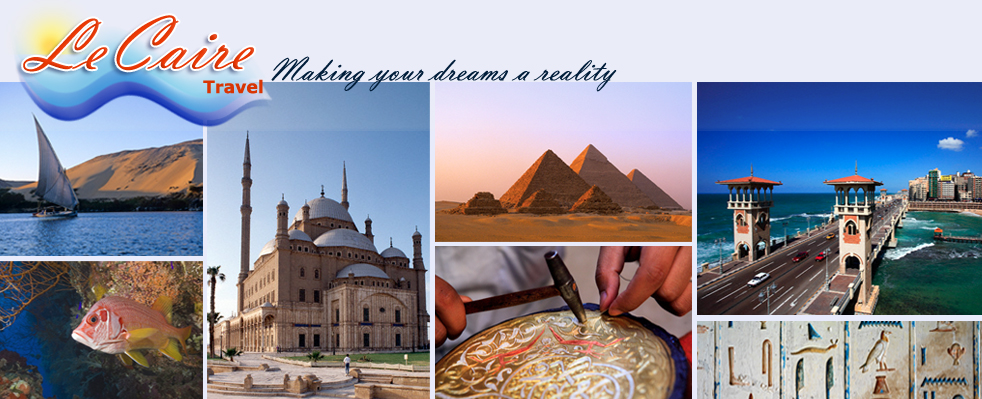|
|
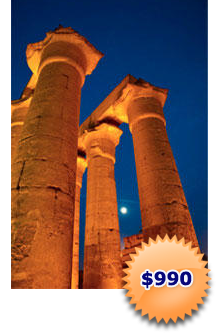 |
Superior Offer
09 Nights / 10 Days
Discover the Difference |
|
|
|
 |
| |
|
 |
Luxor Sightseeing
(03 Nights/04 Days)
|
|
 |
|
| |
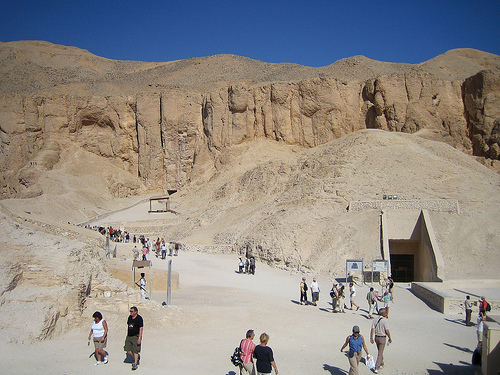 Valley of the Kings Valley of the Kings
Barren Valley of the Kings was the necropolis of the new kingdom pharaohs. By digging their tombs deep into the Theban hills, pharaohs from Tuthmosis I 1500 BC on hoped to stop robbers stealing the priceless possessions buried with them. It was unsuccessful strategy. Despite their hidden locations, every burial chamber was raided except for those of Yuya and Tuya, and Tutankhamun, its glorious treasures still intact. But for all that, the structures themselves remain, their dramatic corridors and burial chambers stunningly adorned with symbolic accounts of the journey through the underworld and ritual paintings to assist the pharaoh in the afterlife. |
 
|
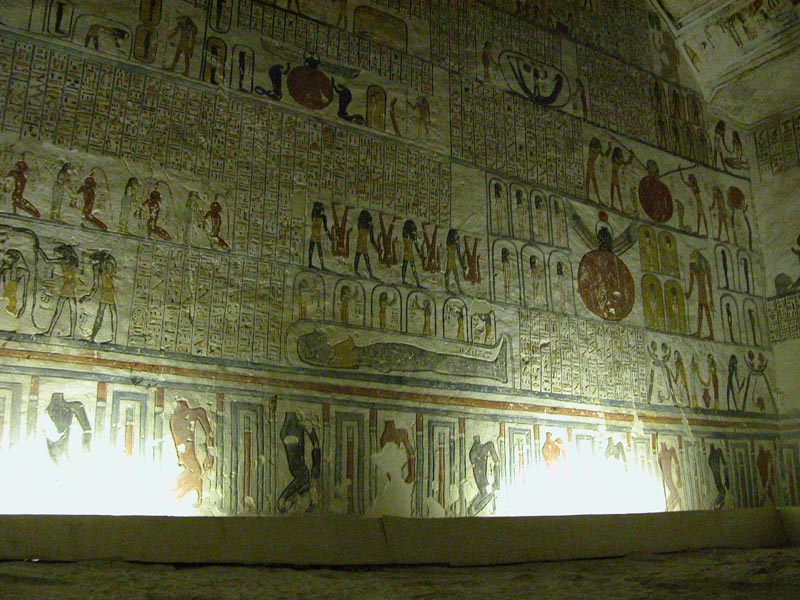 The valley tombs
The valley tombs
Sixty-two tombs have been founded in the Valley of the Kings and all are numbered in order of their discovery. Only few are open at any one time. The most significant tombs are:
Tomb of Tuthmosis III no.34:
Dug 30m above ground in a vain attempt to stop thieves, today the tomb is reached by a metal staircase. The walls are painted with rows of figures portraying the book of Amduat, and a red granite sarcophagus is the sole remaining artifact.
Tomb of Seti I no.17:
Finely carved bas-reliefs and gilded paintings decorate this stunning tomb. The burial chamber is particularly remarkable with its astronomical ceiling and western wall illustrating the book of the Amduat.
Tomb of Ramses VI: no.9
Originally built for his predecessor Ramses V, this large tomb was expanded by Ramses VI. One of the most striking features is the vaulted astronomical ceiling. With its double image of the goddess Nut swallowing and regenerating the sun.
Tomb of Tutankhamun no.62:
Tutankhamun's tomb is small with parts undecorated. Yet the burial chamber , whose king's body inside the gilded coffin.
Tomb of Horemheb No. 57:
Horemheb was the final pharaoh of the 18th dynasty. His tomb departs from the usual style of 18th dynasty tombs in that it consists of a single straight corridor with side chambers. It is decorated with reliefs from the book of Amduat.
.
|
 
|
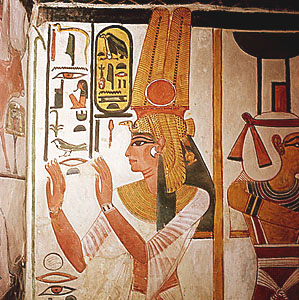 Valley Of Queens Valley Of Queens
Named by Champollion, the valley of the queens lies to the south-west of the Valley of the Kings and holds the tombs of many royal wives and children. Although it was used as a burial site in the 18th dynasty, it was only from the reign of the 19th dynasty pharaoh Ramses I that royal wives were laid to rest here. Of the nearly 80 tombs populating the valley, the most famous is that of queen Nefertari and only a handful are open to the public at any one time.
Tomb of queen Nefertari: No. 66
Regarded as the most beautiful tomb in Egypt, queen Nefertari the favourite wife of Ramses II, was discovered in 1904 by the Italian archaeologist Ernesto Schiapaelli.
Recently restored to its former glory, it is exquisitely decorated with scenes evoking the ritual journey of the soul to the underworld.
Nefertari's tomb was carved from poor quality limestone and over the years its reliefs were damaged by water, humidity, and crystallized salt. As a result, the tomb was closed in 1950s. In 1986 the supreme council of Antiquities and the Getty conversation Institute embarked on an ambitious project to restore the tomb. Salt damaged plaster was removed, cleaned, strengthened and replaced, and a solution of acrylic resin was injected into cracks. The paint work was carefully cleaned and the colures returned to their original vibrancy. Work was completed in 1992 and the tomb was reopened in 1995. However, to control humidity levels, visitor numbers are restricted.
|
 
|
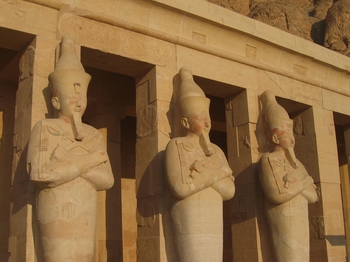 Temple of Hatshepsut Temple of Hatshepsut
Against its stark mountainous backdrop, the partly rock-hewn mortuary temple of Hatshepsut at Deir al-bahry is a breath- taking sight. It was designed by queen Hatshepsut's architect Senenmut in the 18th dynasty and is an extraordinary monument which rises from the desert plain in a series of imposing terraces.
The temple was damaged by Ramses II and his successors, and Christian later turned it into a monastery (hence the name Deir al-bahri, which means '' Northern Monastery''). However, the ongoing excavation of the site continues to reveal much exquisite decoration. Adjacent to the main temple are the ruins of the much older temple of Montuhotep II, the ruler of the 11th dynasty who managed to unite Egypt, and the 18th dynasty temple of Tuthmosis III. The star features of the temple are the reliefs relate Hatshepsut's journey to the land of Punt (Somalia). In which the king of Punt and his wife who is depicted suffering from obesity. Moreover, the columns of the portico around the upper terrace were decorated with Osiride statues of Hatshepsut, characteristically represented as a male king with a beard. Although many statues were destroyed by later pharaohs, several have recently been reconstructed from their fragments.
|
 
|
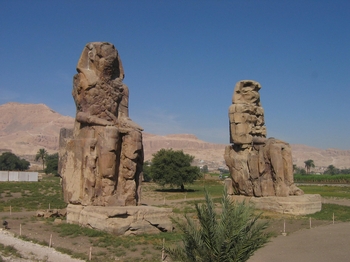 Colossi of Memnon Colossi of Memnon
Soaring 18 m (60 ft) into the sky, the two enthroned statues of Amenhotep III are the first monuments most visitors see on arriving in the West Bank. They originally guarded Amenhotep's mortuary temple- thought to have been the largest ever built in Egypt- which was plundered for buildings material by later pharaohs and gradually destroyed by the annual floods. All that remains are the two faceless colossi, which, despite the ravages of time, are an impressive sight.
During the roman period the northernmost statue became a popular touist attraction as it was heard to sing at sunrise. Prominent visitors to the site to hear this peculiar phenomenon included the emperor Hadrian. The Greeks had earlier attributed the sound to the legendary figure of Memnon greeting his mother eos, the goddess of dawn, with a sigh each morning.
In fact the statues had been badly damaged in an earthquake in 27 BC and its musical talent probably had a purely physical cause related to the damage it had sustained.
|
 
|
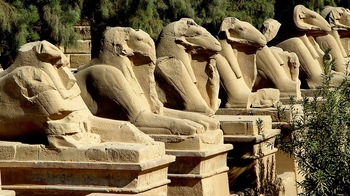 Karnak Temples Karnak Temples
After the pyramids of Giza, Karnak is Egypt's the most important pharaonic site. Excavations over the years have gradually uncovered the original structure of the temple complex, which was built over a 1300-year period and covers a vast area just north of luxor. As well as the colossal temple of Amun, the 100-acre site comprises a fantastic array of temples, chapels, pylons and obelisks, all testifying to the importance of thebes.
From its modest 11th dynasty beginnings, pharaoh after pharaoh added to and changed the existing buildings, seeking to make their mark on the country's most important temple. The temple lay buried under sand for more than 1,000 years before excavation work began in the mid-19th century. Today, the huge task of restoration continues.
The glorious highlight of karnak is the great Hypostyle hall, this cavernous hall was supported by 134 gigantic columns. Moreover, an imposing granite statue of Ramses II, with one his daughters at his feet, stands in front of the entrance to the great hypostyle hall. Also, the central hall of this temple the great festival temple built by Tuthmosis III was supposedly designed to resemble the tent in which he lived whilst on campaign of Syria.
|
 
|
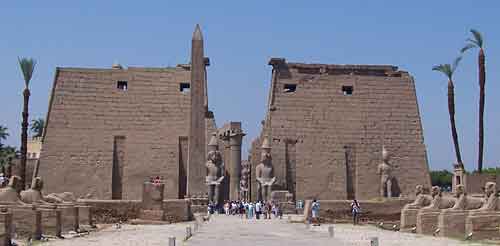 Luxor Temple Luxor Temple
Dominating the banks of the Nile in the center of town, luxor temple is an elegant example of pharaonic temple architecture. Dedicated to the Theban triad of Amun, Mut and Khonsu, the temple was largely completed by the 18th dynasty pharaoh Amenhotep III and added to during the reign of Ramses II in the 19th dynasty. Although the temple was further modified by later rulers, including Alexander the great, its design remained strikingly coherent in contrast to the sprawling complex that developed at nearly Karnak.
In the 3rd century AD the temple was occupied by a Roman camp and the site was subsequently abandoned. Over the centuries it was engulfed in sand and silt, and a village grew up within the temple walls. Then in 1881 archaeologist Gaston Maspero rediscovered the temple in remarkably good condition, but before excavation work could begin the village had to be removed. Only the Abu al-Haggag Mosque, built by the Arabs in the 13th century, was left intact, standing high on the layers of silt accumulated over the years.
The temple is approached by an avenue of sphinxes, which once stretched all the way from luxor to karnak, almost 2 km away. Fronting the entrance to the temple, the gigantic first pylon is decorated with scenes of Ramses II's victory over the Hittites in the battle of Qadesh. Two enormous seated colossi of Ramses and a huge 25-m high pink granite obelisk flank the gateway to the temple. The obelisk was originally one of a pair; the other was removed in the early 19th century and re-erected in the place de la Concord in Paris.
|
 
|
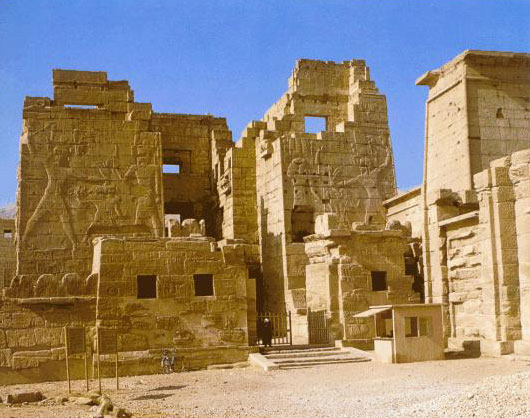 Medinet Habu Medinet Habu
Although second only to karnak in size and detail, the beautiful temple of Medinat Habu is one of the less-visited sites in Thebes the complex is dominated by the huge mortuary temple of Ramses III, modeled on Ramses II's mortuary temple at the Ramsseum.
During later invasions of Egypt in 20th dynasty, the entire population of Thebes took refuge within the temple's massive enclosure walls.
Ramses III's many military campaigns are recorded in detail on the temple's pylons and walls. In the second court, colorful reliefs depicting religious festivals are well preserved, partly thanks to the early Christians who converted the area into a church and covered the offending images with plaster.
To the west of the first court are the remains of Ramses's royal palace. Also within the enclosure walls is the smaller temple of Amun, originally built by Hatshepsut but altered by Thutmosis III and enlarged and modified up to Roman times.
|
 
|
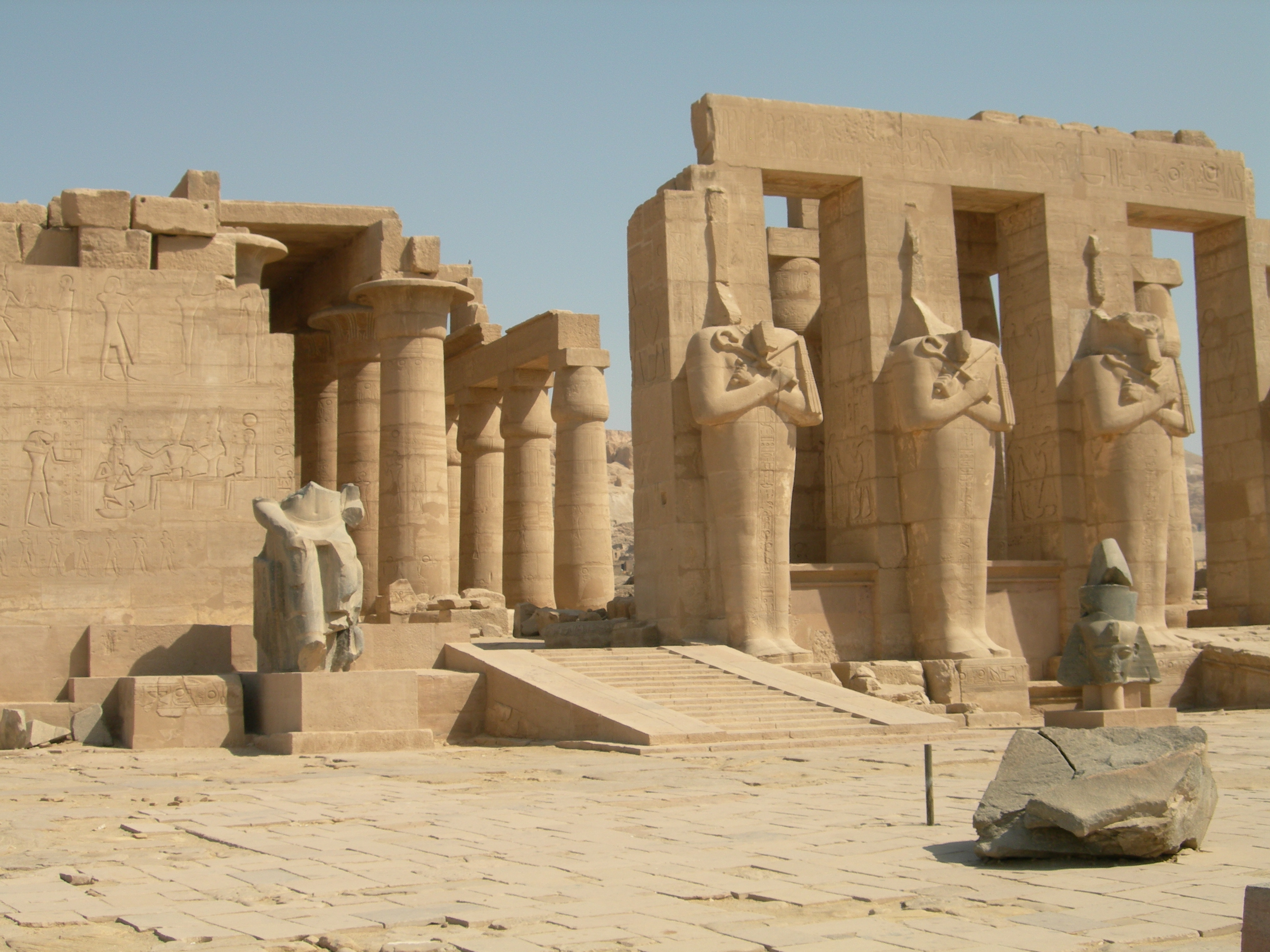 Ramesseum Temple Ramesseum Temple
Pharaoh Ramses II, ruler of Egypt for 67 years in the 19th dynasty, built his mortuary temple, the Ramessum, as a statement of his eternal greatness and to impress his subjects. The huge complex, which took more than 20 years to complete, now lies largely in ruins. Dedicated to Amun, it once boasted an 18-m high, 1,000-tonne colossus of Ramses, parts of which lie scattered around the site. The complex also included a smaller temple dedicated to Ramses's mother Tuya and his wife Nefertari, as well as royal palace and storehouses. |
 
|
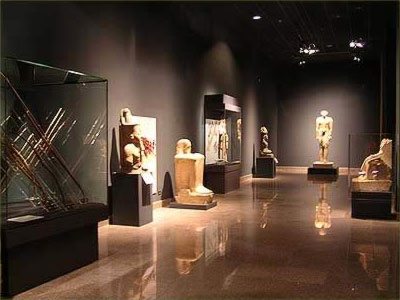 Luxor Museum Luxor Museum
Situated on the Corniche half-way between luxor temple and Karnak, this well designed museum has an excellent collection of statues and artifacts found in temples and tombs in the luxor area. Displays of pottery, jewelry, furniture, statues and stelae were created by the Brooklyn Museum of New York. They include a carefully selected assortment of items from the Theban temples and necropolis.
There are a number of exhibits from Tutankhamun, including a cow-goddess head from his tomb on the first floor and his funerary boats on the second floor. However, some of the real attractions include a statue of Tuthmosis III (circa 1436 BC) on the first floor, and 283 sandstone blocks arranged as a wall from the ninth pylon of the Karnak Temple
|
 
|
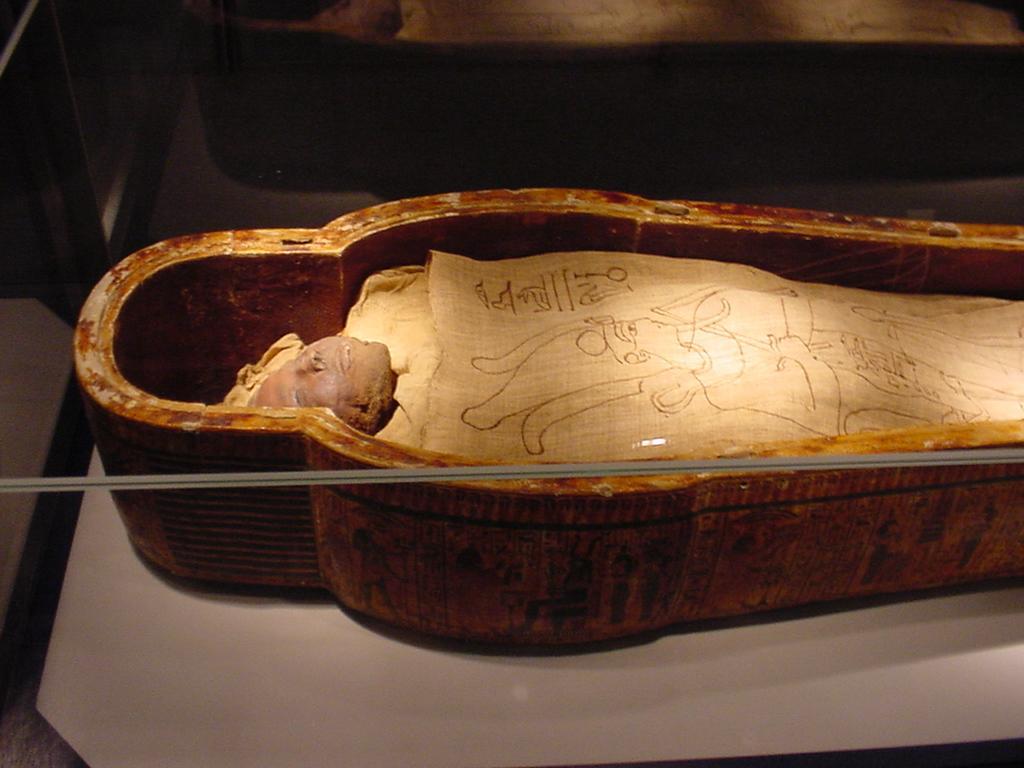 Mummification Museum
Mummification Museum
This small museum on the banks of the Nile houses a fascinating display describing the process of mummification performed by the ancient Egyptians. Instruments for removing the internal organs, substances to treat the body and items needed by the mummy on its journey to the afterlife are all displayed there.
The intact mummy of Maseharti, a 21st-dynasty high priest and general. A mummified cat, the symbol of goddess Bastet, and a mummified ram, the symbol of the god Khnum.
Among the informative items on display is a cross-section of a mummified skull, stuffed with material where the brain has been removed. There is also a piece of a mummified toe.
|
 
|
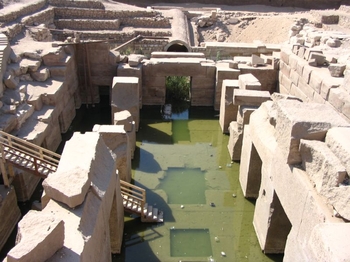 Abydos
Abydos
Abydos, the cult center of Osiris, god of the dead, was regarded as the holiest of Egyptian towns in pharaonic times. All ancient Egyptians tried to make the pilgrimage to the town during their lifetime or hoped to be buried there. Many tombs were painted with scenes of the deceased making the posthumous journey to Abydos.
Tradition had it that Osiris- or at least his head- was laid to rest here after he was murdered by his brother Seth and his mutilated body strewn over the country.
Today, almost all that can be seen is the stunning 19th dynasty temple of Seti I, it is one of the most intact temples in Egypt.
|
 
|
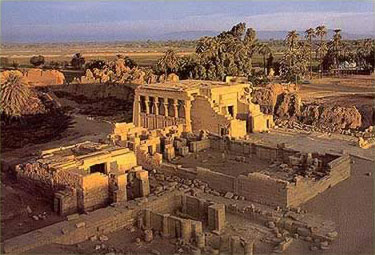 Dendera Dendera
Dendera, where Hathour supposedly gave birth to Hours's child, the god Ihy, was Hathour's cult center from pre-dynastic times. Buried under sand until the 19th century, the vast temple of Hathor remains remarkably intact. The current temple is Greaco-Roman but its design imitates typical pharaonic temple architecture- a series of large hypostyle halls leading to a dark sanctuary, surrounded by a maze of store rooms, chapels and crypts. Other buildings within the mud brick walls of the complex include two mammisi (birth house) and a Coptic basilica.
The Astronomical ceiling is the highlight, in this detail from the ceiling the sun god Ra is shown sailing his sacred barque across the sky.
|
 
|
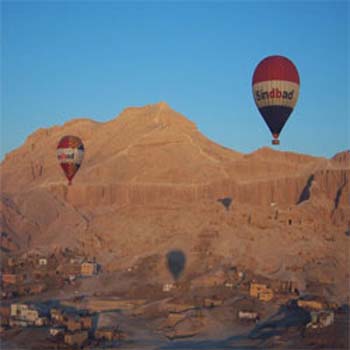 Hot air Balloon Hot air Balloon
A hot-air balloon flight is unique from all other experiences of flight as there is no sensation of motion. Traveling at heights of up to 1500 feet, the feeling is one of peace and tranquility. The earth slowly descends and rotates below you. Within moments after lifting off you become at ease while you effortlessly drift over the treetops and the spectacular Luxor landscape. It is like a dream to gently float over the countryside in complete harmony with your surroundings.
Daily Flights
- Flights Include Refreshments Served Before Flight .
- Transportation From And Back To Your Hotel .
- Pickup Time Is Between 05:00- 05:30 Am For Morning Flights. Summer And Winter Hours May Slightly Change , However Our Stuff Will Indicate The Exact Hours.
- No Special Clothing Is Required . A Sun Hat , Sunglasses , And Flat Shoes Are Recommended.
- Passenger Insurance Included.
- If The Flight Is Canceled Due To Bad Weather Conditions, You Will Receive a Full Refund.
- As A Souvenir Of Your Flight You Will Be Presented With A Certificate Commemorate Your First Flight With Us.
Safety Considerations
The safety of our passengers and pilots is our #1 priority. Flight decisions are based on a multitude of factors, including: weather forecast, current weather conditions at the time of launch preparation, number and weight of passengers and but not limited to the skill and discretion of the pilot(s). The pilot's decision on whether to fly is final. Sindbad Balloons has gone to great lengths to select the safest and most experienced pilots and balloons possible. We have in our fleet the newest, top of the line commercial balloons and chase vehicles.
As with all aircraft, balloons are subject to annual inspections by an ECCA certified repair facility to insure minimum safe tolerances. All of our balloons are inspected annually per regulations.
Our commercial Balloon pilots are instructors with high numbers of hours of flight experience. The pilots will brief, inform and instruct passengers on their safety and procedures during and before the flight.
|
|
|
|
|
|
|
|
|
 |
|
